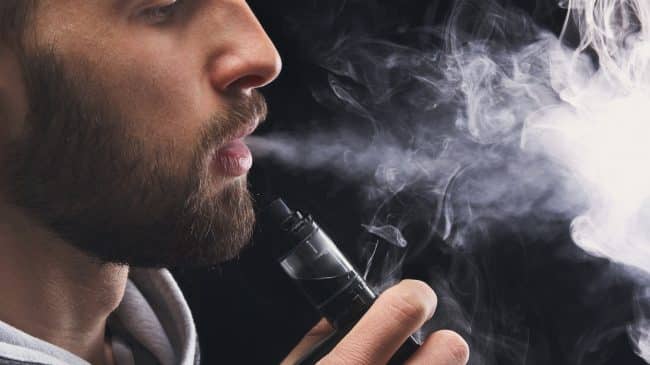The Centers for Disease Control and Prevention (CDC) finally identified a primary suspect in the wave of vaping-related lung illnesses and deaths. Examining lung tissue samples of patients hospitalized with vaping-related illnesses, CDC found 100 percent tested positive for vitamin E acetate, which is often used to cut marijuana oils. This finding was not a surprise to those who have been arguing that the cause of these illnesses is not the commercial e-cigarette market, but the illicit market for THC vapes.
For the past three months, the CDC’s data showed a clear pattern. Those getting sick have been vaping illicit or adulterated THC, the main psychoactive component in cannabis. A tiny minority of patients claimed to have vaped just nicotine but were often found to be lying, most likely due to the fact that marijuana is still a schedule one substance.
It should have been obvious to CDC that regular e-cigarettes were not and could not have been causing these illnesses. Commercial nicotine e-cigarettes have been on the American and European markets for more than a decade and are used by tens of millions of people.
In Europe, there is no such outbreak of vaping-related illnesses, nor is there one in Canada. According to the deputy director of CDC, Anne Schuchat, the agency doesn’t believe these illnesses were occurring in previous years but being underreported. Instead, on Oct. 25, Schuchat told journalists on a telebriefing, “We [CDC] think something riskier is in much more frequent use.”
Instead of conducting a reasonable investigation and giving consumers useful advice, CDC has been deliberately ambiguous and helped spark a national panic over vaping. This contrasts sharply with CDC’s actions on E. coli last year.
On April 10, 2018, CDC announced an E. Coli outbreak with the source unknown. Just eight days later, the agency determined the cause was romaine lettuce from a specific region. The primary factor for their speedy conclusion was interviews with people who had gotten sick. They found that 93 percent ate romaine lettuce. Although no common grower, supplier, distributor, or brand of romaine lettuce had been identified, the CDC didn’t tell consumers to stop eating lettuce. Instead, the CDC recommended: “If the romaine lettuce is not labeled, do not buy, serve, sell, or eat it.”
Contrast this to CDC’s advice on vaping, where more than 80 percent of patients interviewed admitted to using THC. “Since the specific compound or ingredient causing lung injury are not yet known, the only way to assure that you are not at risk while the investigation continues is to consider refraining from use of all e-cigarette, or vaping, products.”
No commercial e-cigarettes have been associated with these illnesses in the U.S. or anywhere else in the world. But the CDC is telling consumers to stop vaping altogether, even though the National Academies of Sciences Engineering Medicine (NASEM) says there is conclusive evidence that e-cigarettes are less toxic than combustible cigarettes. According to the Royal College of Physicians, the risks of e-cigarettes are unlikely to exceed five percent of combustible cigarettes.
The consequences of the CDC’s advice have been devastating. More Americans now incorrectly believe e-cigarettes are just as or more dangerous than combustible cigarettes. A Morning Consult poll conducted in September shows the majority of people blame e-cigarettes, like Juul, for the outbreak rather than black market THC or marijuana cartridges.
E-cigarette sales have slowed, and the decline in cigarette sales has weakened. The Food and Drug Administration (FDA) may soon ban all e-cigarette flavors, which could put more than 100,000 people out work, deny safer alternatives to adult smokers, and spark a never-before-seen black market in flavored nicotine.
The CDC’s communication failure has even spilled over into the rest of the world. As a direct consequence of the CDC’s miscommunication, India banned the sale of e-cigarettes entirely. India has 12 percent of the world’s smokers and suffers one million tobacco-related deaths every year. But thanks to a moral panic and mass confusion, a country that suffers more than most from smoking-related diseases, banned the most effective alternative to cigarettes ever invented.
If the Trump administration or Congress moves ahead with a ban on e-cigarette flavors, the only e-cigarettes left in America will likely be in tobacco flavors sold by tobacco companies. This calamitous situation is in no small part, thanks to the deliberate ambiguity of the CDC.
It should be a source of embarrassment that the public would be better informed on this issue if they listened to a vape shop owner or a cannabis website rather than the nation’s top public health authority.
This column originally appeared in RealClearPolicy.

